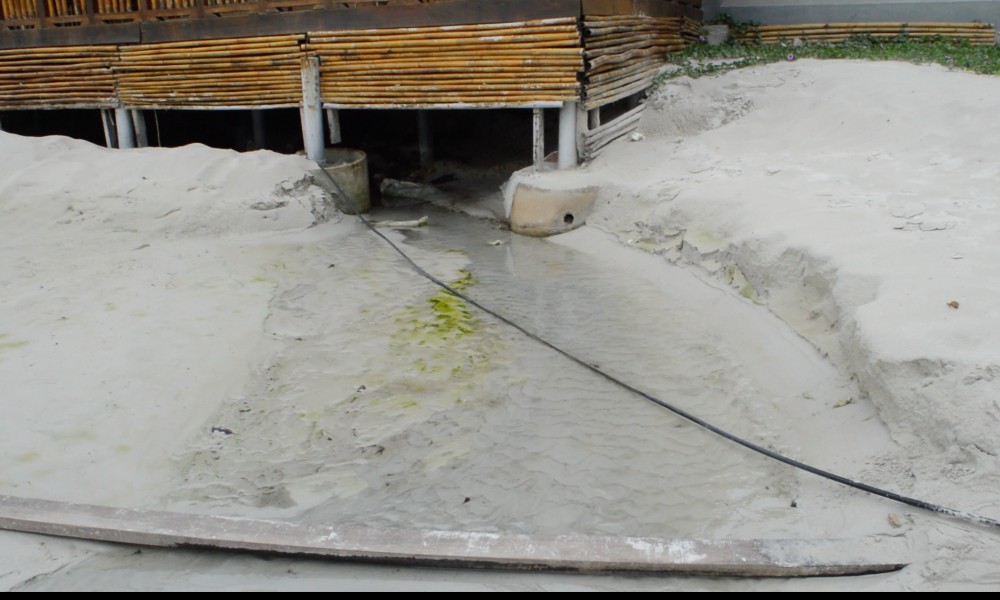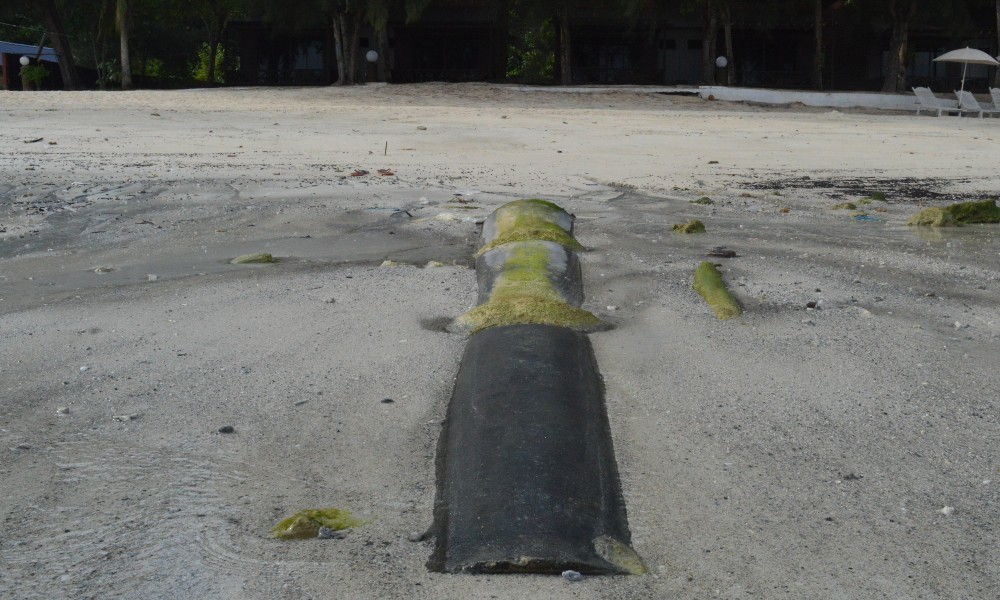With around a million tourists frolicking on Malaysian beaches every year, unlicensed resorts are a money-spinner for financially challenged villagers who depend on tourism for a livelihood.
However, an investigation found that villagers who convert their homes into chalets and homestays to cater to both foreign and local tourists are causing more damage to the islands than they know.
It was found that much of the sewage pollution from island resorts can be traced to unlicensed ones. Many of these resorts were also built without adherence to fire and safety laws, have improper sewage systems and cause other issues like mosquito breeding due to clogged drains.
Observers who spoke to Malaysiakini also claim loose enforcement, with some alleging that enforcing officers have vested interests in the local businesses.
50 licensed, many more in operation
One of Malaysia’s most popular island destinations is the Perhentian Islands, which falls under the Besut District Council of Terengganu.
Speaking on condition of anonymity, a council officer with knowledge of the matter admitted that many resorts on the Perhentian Islands are unlicensed.
“We have done numerous raids and issued compounds, but they ignore it and continue to operate,” she revealed.
The officer said these resorts do attempt to apply for licences through the Terengganu State Economic Planning Unit, but are often rejected due to overcrowding, especially within the local village, Kampung Pasir Hantu.
Nevertheless, seeing the revenue potential, these operators carry on with their plans without registering themselves as a resort with the district council or the state’s tourism board.
When contacted, the state’s tourism board similarly said there are about 50 official resorts on the Perhentian Islands but there are many more that are unregistered with the board.
A study looking into the capacity limits of accommodation on the Terengganu islands by PLANMalaysia Terengganu in 2018 revealed that most tourist areas in Perhentian, Redang, Lang Tengah, Kapas and Tenggol Islands were operating in excess capacity.
The study also revealed that the number of rooms available on almost all the areas investigated, such as Teluk Aur, Teluk Keke, Teluk Pauh and Long Beach in Perhentian and Redang, had exceeded the real carrying capacity standards for development per acre.
According to a spokesperson from PLANMalaysia Terengganu, the excessive loading on the islands could lead to serious ecological damage.
He said although the corals in these areas were categorised as in a good state, it was still in danger of “uncontrolled, excessive physical development”.

Beach no longer visible
Indah Water Konsortium’s Head of Operations in Kelantan and Terengganu, Edlyn Surya Abu Bakar, pointed out that in certain locations, such as Kampung Salang and Kampung Tekek on Tioman Island, development had become so saturated that “the beach is barely visible”.
Several years back, the overcrowding disrupted water supply as demand far exceeded the supply from the local water source, she said.
On Tioman Island, fresh water is obtained from the island’s natural water source, unlike the Perhentian Islands, where water is supplied via pipes from the mainland.
During Edlyn’s site visit to Kampung Pasir Hantu on Perhentian Kecil Island, she found stagnated water due to clogged drainage systems that were not designed for the excess capacity.
She noted that many of the local villagers had converted their homes into multiple storey complexes because they could see the hefty gains from tourism, largely from foreign backpackers. However, the septic tanks and drainage systems were not designed to accommodate the increased usage.
“The sewage and sludge are overflowing from the septic tanks, which were not designed for this kind of capacity.
“It is contributing to clogging of the drainage systems, where kitchen water, rainwater and any form of grey water from washing-up is also flowing into the same drainage, and eventually into the sea,” she said.
Edlyn said the sewage system, or lack thereof, violates regulations as all sullage and sewage water must be directed into the sea via marine overflow pipes, that extend at least one to two kilometres away from the beach.
Deputy Co-Chair of the Environmental and Climate Change Committee of the Malaysian Bar Council, Saha Deva Arunasalam, said local authorities should immediately shut down the operations of these unlicensed premises.
“Marine park fees are being collected, so some responsibility must be accorded to ensure these premises are properly regulated, licensed and follow strict guidelines as stipulated in the Local Authorities Guidelines,” he said.
He said local villagers may also respond by demanding the local authorities build a sewage treatment plant to deal with the growing need to deal with sewage on the island.
But this is untenable for the state, as the resorts are unlicensed and resources cannot be allocated to them as a result, he said.

Sewage plant plans delayed
Building a sewage treatment plant on key islands, namely Tioman, Redang and Perhentian has been an issue of contention for over a decade as various government agencies tussle over its relevance.
Edlyn said IWK had presented a proposal for a regional sewage plan to obtain the budget under the 10th Malaysia Plan (2011-2015) for the Redang and Perhentian Islands. The proposal included design, capacity details, and location strategy.
“What I heard is that it is pending the approval of the budget. It has been brought forward to the 11th and now the 12th Malaysia Plan.
“I was informed that it will be done, but with some changes to the design and most likely incorporating green technology so the treated water can be reused, instead of released into the sea,” said Edlyn, who is also in the planning division of IWK Pahang, Kelantan and Terengganu.
Under the 12th Malaysia Plan, the Sewerage Master Plan under the 12th Malaysia Plan will be carried out by the Sewage Services Department (JPP) under the Environment and Water Ministry.
JPP Development Management Division director Alias Mohammed said the establishment of a treatment plant on Redang and Perhentian Islands was still at the planning stage.
“We are looking at options to find a proper system or find suitable methods to solve the problem. We need to assess the condition at the islands before deciding on a suitable system to be built there,” he said.
Alias declined to provide a timeline for completion. It is understood that much of the delay is budgetary in nature.
It is learnt that approximately RM117 million was set aside for this development in the 10th Malaysia Plan, but budgetary constraints meant it was carried forward to the 11th Malaysia Plan and now raised again under the 12th Malaysia Plan.
For Tioman Island, the plans to develop a plant had been proposed during budget planning for the 9th Malaysia Plan, but it has yet to be implemented.
“This (plan for a sewerage plant) comes up every time there is an issue, then it dies down and gets forgotten,” Edlyn said.

Loopholes in the law
The urgent need to monitor pollutants on these islands grows as the small resorts grow in size and number, Universiti Islam Antarabangsa expert in biotechnology engineering, Zaki Zainuddin said.
“If it is a lagoon for instance, is there pure dispersion? If the area is in excess capacity, there is bound to be accumulation of nutrients that cannot be flushed out effectively.
“This leads to nutrient loading which causes algal bloom that can destroy corals,” he pointed out.
Zaki said loopholes in sewage regulations mean that bacteria levels in sewage were not monitored under the Environmental Quality Act 1974.
“This is an important aspect, especially in a recreational area. The justification is that the bacteria will die off when released into the environment, but there is a contention to this assumption,” he said.
Saha Deva, who is also the vice-president of environment group Peka Malaysia, agreed that laws need to be enhanced to incorporate environmental sustainability concerns.
“Firstly, at present the laws covering water quality issues, for instance, are very fragmented. There are many different laws for different issues, under different ministries.
“There is also the issue of the states’ authority on land matters, which holds above federal government policies,” he said.
Saha Deva says a constitutional amendment is very much needed to make sure the environment is clearly stipulated and as a right that is protected under the constitution.
“Right now it is not.”
In the absence, lawsuits on environmental protection thus far have relied on case laws to “bring the environment into the right of life”.
“This is the basis of the suits that we can bring against authorities to say that we are entitled to protection of the environment,” he explains.
He said a constitutional amendment will allow better protection of the environment, as current laws are insufficient to ensure the sustainability of the environment, a rapidly depleting resource. - Mkini




No comments:
Post a Comment
Note: Only a member of this blog may post a comment.